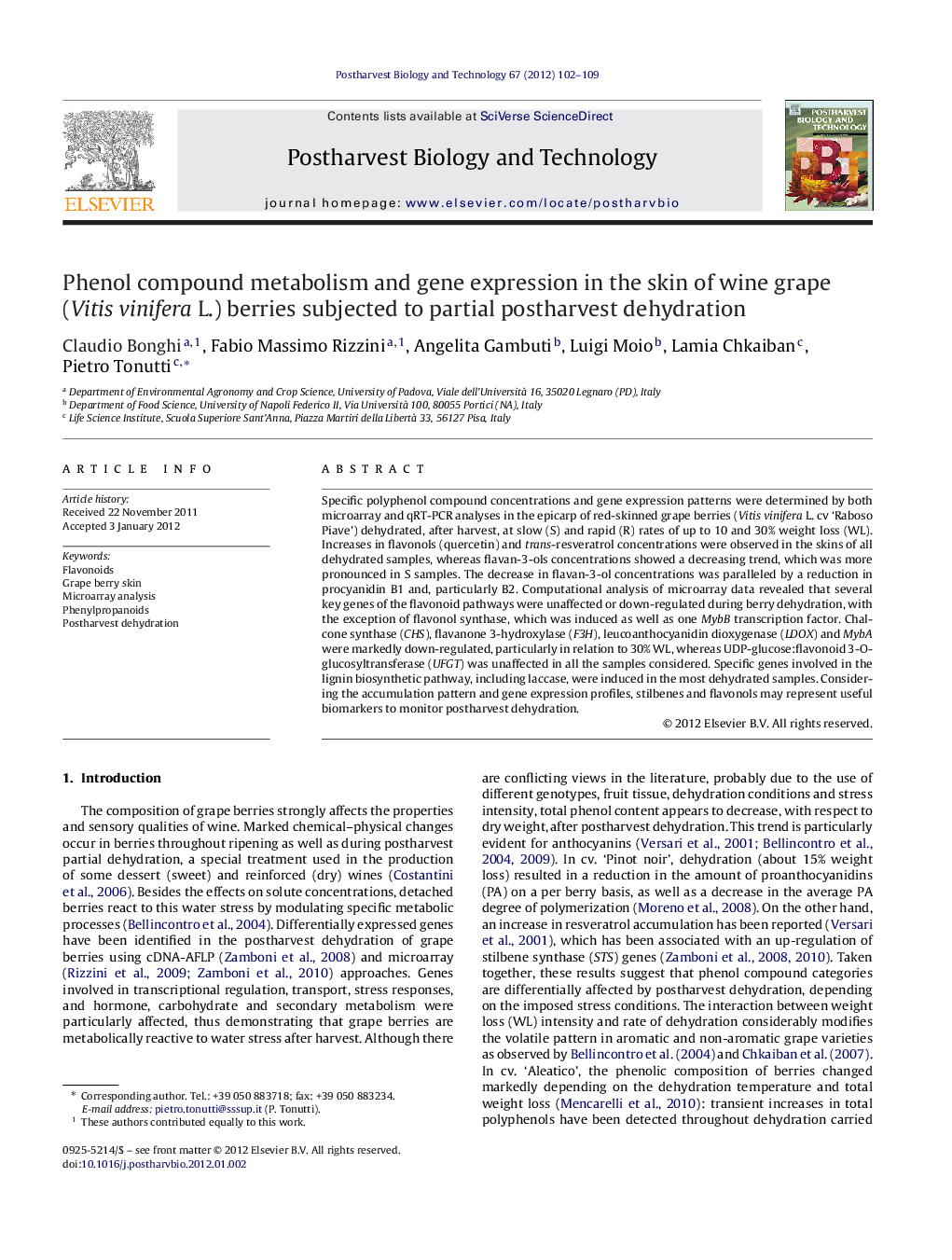| کد مقاله | کد نشریه | سال انتشار | مقاله انگلیسی | نسخه تمام متن |
|---|---|---|---|---|
| 4518757 | 1625027 | 2012 | 8 صفحه PDF | دانلود رایگان |

Specific polyphenol compound concentrations and gene expression patterns were determined by both microarray and qRT-PCR analyses in the epicarp of red-skinned grape berries (Vitis vinifera L. cv ‘Raboso Piave’) dehydrated, after harvest, at slow (S) and rapid (R) rates of up to 10 and 30% weight loss (WL). Increases in flavonols (quercetin) and trans-resveratrol concentrations were observed in the skins of all dehydrated samples, whereas flavan-3-ols concentrations showed a decreasing trend, which was more pronounced in S samples. The decrease in flavan-3-ol concentrations was paralleled by a reduction in procyanidin B1 and, particularly B2. Computational analysis of microarray data revealed that several key genes of the flavonoid pathways were unaffected or down-regulated during berry dehydration, with the exception of flavonol synthase, which was induced as well as one MybB transcription factor. Chalcone synthase (CHS), flavanone 3-hydroxylase (F3H), leucoanthocyanidin dioxygenase (LDOX) and MybA were markedly down-regulated, particularly in relation to 30% WL, whereas UDP-glucose:flavonoid 3-O-glucosyltransferase (UFGT) was unaffected in all the samples considered. Specific genes involved in the lignin biosynthetic pathway, including laccase, were induced in the most dehydrated samples. Considering the accumulation pattern and gene expression profiles, stilbenes and flavonols may represent useful biomarkers to monitor postharvest dehydration.
► Postharvest grape berry dehydration affects polyphenol metabolism in the grape skins.
► Quercetin and trans-resveratrol accumulated and flavan-3-ols decreased following dehydration.
► Genes of the early steps of phenylpropanoid pathway became up-regulated.
► Transcription of anthocyanin biosynthetic genes was not induced by different rates or levels of water loss.
► Grape berries react differently to water stress conditions in the field and after harvest.
Journal: Postharvest Biology and Technology - Volume 67, May 2012, Pages 102–109